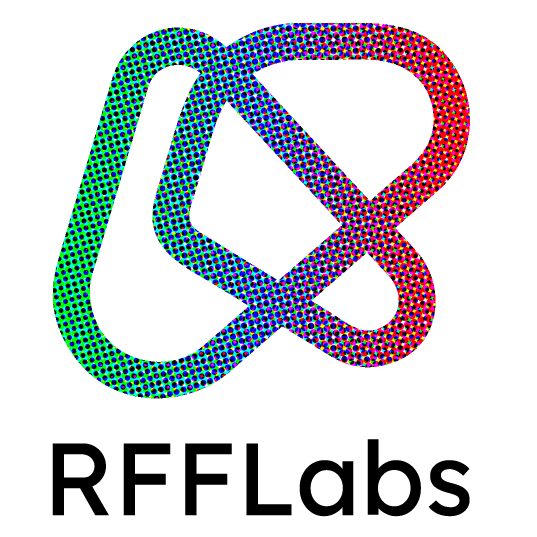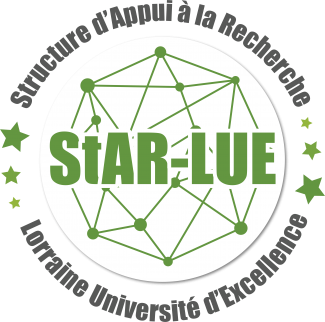Internship: Quality in Fused Granular Deposition for distributed recycling
Context
Since few years ago, the ERPI laboratory developed the research platform called the Lorraine Fab Living Lab (LF2L)^[More details: http://lf2l.fr/] with the purpose to evaluate prospective assessments and innovative usages. The projects at LF2L are developed in a living lab approach taking into account the User Centered Design principles.
The INEDIT (open INnovation Ecosystems for Do It Together process) is a research project obtained in the framework of the European Union’s H2020 program since autumn 2019 for a duration of 36 months. INEDIT seeks to create an open innovation European DIT ecosystem for sustainable furniture co-creation. The main idea is to to deliver sustainable, smart and personalized new products in a shorter time to market through the creativity of consumers, shaping it through designers’ professional skills, and makes it viable by leveraging on the expertise of production specialists.
INEDIT intends to demonstrate the capacity to turn the well-known ‘Do-It-Yourself’ (DIY) approach applied by individuals within FabLabs into a professional approach named ‘Do-It-Together’ (DIT). Thus, a demonstrator of this DIT approach will be developed at LF2L.
Distributed recycling via Additive Manufacturing
Circular economy is a major societal challenge in order to increase the recycling loop of plastic materials.
Therefore, one of the main output for INEDIT project is to evaluate the technical viability of Distributed Recycling via additive Manufacturing (DRAM) approach, based on our recent article as illustrated in the figure 1.
The global ambition is to develop a Green Fablab initiative (http://lf2l.fr/green-fablab/) to
create sustainable furniture.
](http://lf2l.fr/assets/images/3-projects/gf/DRAM.png) {width=70%}
{width=70%}
The use of filament in the 3D printer is the establish method to the material deposition in the additive manufacturing context. Nevertheless, the fabrication of filament is one step time-consuming and it does not add value to the mono-material printed objects. Indeed, the use of filament feedstock increases costs and narrows the variety of materials that can be used.
The context of this internship project is placed at the Feedstock (IV), Printing (V) and Quality (VI) phases. Recently, a technology called Fused granular fabrication (FGF) is becoming very interesting given the fact of the adaptation of open-source (OS) 3D printers with domestic waste plastic extruders. This approach have been explored as a new prospective to polymer recycling in order to print object directly from recycled pellet as feedstock material.


For instance, @Arthur2020 to evaluate the performance of the Fused Filament Fabrication and FGF techniques in terms of technical and economical dimensions at the desktop 3D printing scale. Recycled and virgin polylactic acid material was studied by using five different types of recycling feedstocks: commercial filament, pellets, distributed filament, distributed pellets, and shredded waste. Likewise, @Byard20191 tested an open source Gigabot X to evaluate virgin PLA and four recycled PLA, ABS, PET and PP particles. Experimental work was made to optimize the print speed and extrusion conditions in order to find optimal printing set-ups for each polymer.
The major interest of this approach is the reduction of cost and greenhouse gas emissions related to waste collection and transportation as well as the environmental impact of manufacturing custom plastic parts. This distributed recycling approach could be an additional alternative to the conventional centralized polymer recycling [@Baechler20132; @Santander20203].
However, one key point is missing. How can we evaluate the ‘robustness’ of the FGF process to treat plastic waste material including PLA, ABS, HDPE via DRAM approach’?. This is a major technical aspect in order to understand the characteristics of the recycled materials.
Goal
The main goal of the internship is to evaluate the printing quality and reproducibility of a Fused Granular Fabrication machine designed as an open hardware to test the reliability to print recycled assets collected at LF2L conditions.
Specific goals
The main specific goals of this internship are:
- Realization of first trials test using virgin material (e.g. PLA) for calibration purposes and calibration test with regard to the commercial machines
- Evaluate the limits conditions of the open hardware machine using Design of Experiments (DoE) approach
- Fabrication of printing samples to validate the quality considering the INEDIT project conditions.
- Documentation of the test as scientific rapport defining the machine, protocol, user experience and the implications for DRAM.
Expected elements to the end of the project
The following elements are expected as results:
- Literature review on the FGF process considering the technical features of FGF.
- Design a benchmarking model to evaluate the printability for FGF.
- A technical rapport considering the experimentation protocol.
- An on-line platform (e.g. a wiki, html page) for a complete documentation of the test
- Data analysis of the results
Timming: February 2021 - Sept 2021
Profile
- Mechanical / Mechatronics / Industrial engineering students with skills on product design
Contact
First, read our Internship guide. Then, send us your CV and cover letter. If additional questions, let us know
- Hakim Boudaoud (hakim.Boudaoud[at]univ-lorraine.fr)
- Fabio Cruz (cruzsanc1[at]univ-lorraine.fr)
References
-
Byard, Dennis J., Aubrey L. Woern, Robert B. Oakley, Matthew J. Fiedler, Samantha L. Snabes, and Joshua M. Pearce. 2019. “Green fab lab applications of large-area waste polymer-based additive manufacturing.” Addit. Manuf. 27 (May): 515–25. https://doi.org/10.1016/j.addma.2019.03.006. ↩
-
Baechler, Christian, Matthew DeVuono, and Joshua M Pearce. 2013. “Distributed recycling of waste polymer into RepRap feedstock.” Rapid Prototyp. J. 19 (2): 118–25. https://doi.org/10.1108/13552541311302978. ↩
-
Santander, Pavlo, Fabio A Cruz Sanchez, Hakim Boudaoud, and Mauricio Camargo. 2020. “Closed loop supply chain network for local and distributed plastic recycling for 3D printing: a MILP-based optimization approach.” Resour. Conserv. Recycl. 154 (March): 104531. https://doi.org/10.1016/j.resconrec.2019.104531. ↩






